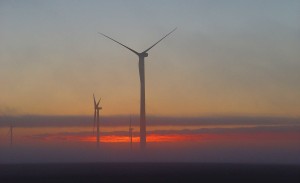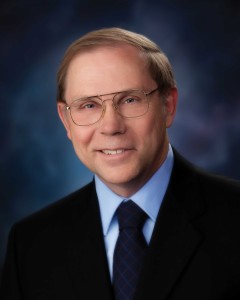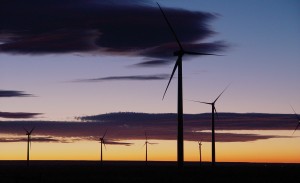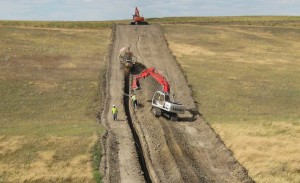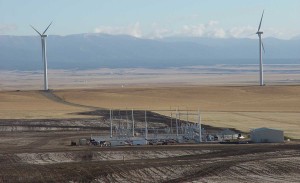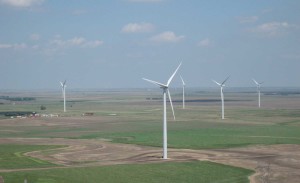Maybe Bob Dylan was right. The answer is blowing in the wind, at least when it comes to energy production.
One-quarter of all additional energy capacity added in 2017 came from wind power, according to the U.S. Department of Energy’s Wind Technologies Report. Nationally, wind energy contributed 6.3 percent of the nation’s electrical supply.
The growth of wind energy since the first large commercial farm was installed in 1980 has been unimaginable, even for Dick McComish, a 1975 electrical engineering graduate, president and managing principal of one of the nation’s leading electrical energy development consulting companies.
Electrical Consultants Inc. was a four-person firm when McComish joined the Billings, Montana-based firm in 1990 and bought majority interest in 1993.
Today, “I could arguably say we are No. 1 in the nation†among consulting firms that provide high-voltage power-delivery transmission and distribution engineering, McComish said. There are no specific statistics to rank firms in this discipline, of which there are a dozen major ones in the nation, he said. “I can tell you, of the top 10 wind energy developers in the U.S., we do the majority of engineering for three of them.â€
Electrical Consultants has 525 employees in 14 offices across the U.S. The employee count includes 15 to 20 SDSU engineering graduates, McComish said.
“It’s exceeded what I ever thought we would achieve,†he said of Electrical Consultants. “I thought within five years we might have 30 people. I never imagined this company would grow like it has. It ramped up slowly. After two or three years it picked up, and it has been a steady increase. Today it’s an incredible volume.â€
He credits Electrical Consultants’ growth to building relationships. “What transpired, after the first project, is we made an effort to get acquainted with other developers in the industry.â€
Wind history dates to 2001
Electrical Consultants’ entry into wind energy followed an August 2001 visit by entrepreneurs Jorg Beland, who was with a German engineering firm, and Robert Quinn, an agronomist professor emeritus from the University of California-San Diego. Quinn had farmland in Montana that he wanted to develop for wind generation.
“Although the financial resources of the visionaries for development was meager, their passion convinced me that wind development would be good for Montana. ECI joined as a partner, agreeing to provide a good part of the needed high-voltage utility system knowledge and engineering without payment.
“Through their combined efforts, wind generation was first brought to Montana with the inauguration of the 135 MW   Judith Gap project in 2005 … (That) proved to be the beginning of ECI becoming one of the largest providers of engineering and full engineering, procurement
and construction services for wind energy in the country,†McComish said.
Of that initial venture, he said, “I’m the type of individual, I don’t take risks without making sure they were measured risks. I wasn’t at all concerned.â€
Relationship building the key
Today, 20 percent of Electrical Consultants’ business is from wind energy. Another 20 is from solar with 60 percent from traditional utility companies.
McComish’s move to Electrical Consultants followed 15 years with another Billings-based electrical consulting firm. He initially worked in field construction management before working his way to vice president of engineering. The Estelline native said those early years were “a great learning track.
“I worked with field testing engineers and was mentored by a truly great individual with an electric cooperative in Minot, North Dakota, who became family. I felt I could develop the contacts and relationships (to be an owner). Within five or six years after graduating, I found I loved the business side as much as the engineering and set a goal to be an owner.â€
‘Employees like family’
A key facet of owning such a specialized business is employee development. A steep learning curve faces would-be wind development engineers, even for the best of students—and McComish makes a point to attend the Jerome J. Lohr College of Engineering career fairs.
“Most students become able to act pretty independently and do design within two years. We definitely have a training program. It’s more working shoulder-to-shoulder with an experienced engineer. You can’t just go hiring experienced people. They just don’t exist.
“We have always treated our employees like family. I’m proud to say we’re the largest company our size in this field that I know of that has never had a layoff. We did move to a 40 percent ESOP (employee stock ownership program) in 2017,†McComish said.
That means 40 percent of Electrical Consultants’ total shares are distributed to all employees. The remaining 60 percent is owned by 28 individuals.
‘Never had a layoff’
Jon Bormann, a 1998 SDSU electrical engineering graduate and general manager of Electrical Consultants’ Mankato, Minnesota, office, said, “People do take pride in knowing they’re part owner of the company; what they do does matter.â€
Bormann joined the firm right after his December graduation and was at the Billings office for 10 years before opening the office in Mankato, near his wife’s family. Bormann was originally from Iowa. So they both saw benefits in moving back to the Midwest.
But Bormann said the big attraction of Electrical Consultants is the company atmosphere.
“We’ve never had a layoff for lack of work. I never have to worry about my job security as long as the job performance is there. There are industries that really are driven by the ups and downs. You’ll hire on in an up and be let go in a down. We’ve been fortunate to have been in an industry that has more ups than downs, but there have been downs.
“That’s a big selling point to say we don’t hire just to staff a project or a peak, we’re hiring to expect you to retire at ECI,†Bormann said.
Connecting supply with demand
One of the biggest challenges facing the wind energy nationwide is getting the supply to the demand.
It’s the major issue in holding back wind development in western South Dakota, where “there is tremendous potential for development but a shortage of transmission capacity,†McComish said. “Locating wind projects too far from transmission lines having available spare capacity quickly makes projects uneconomical.â€
In addition to the turbine, a collection system is needed to gather the output of several individual wind turbines into a wind farm substation. The majority of these collection systems are placed underground to ensure reliability during all weather conditions as well as to observe visual permit restrictions, he explained.
Dave Graves

